
Stop overpaying - start transferring money with Ogvio. Sign up, invite friends & grab Rewards now! 🎁
Bitcoin is undoubtedly the most popular cryptocurrency there is - even your grandma probably knows what it is. In this Strike crypto review, we’ll look at a platform built with Bitcoin in mind, offering a simple way to buy, send, and spend BTC. Beyond just purchasing the asset, Strike also stands out for its “Send Globally” feature and Lightning Network support, making transactions faster and cheaper.
While Strike’s focus is clearly on Bitcoin, that doesn’t mean it’s only for hardcore BTC fans. Some users might be drawn in purely for its payment capabilities, while others may appreciate it as a straightforward entry point into crypto without the distraction of hundreds of altcoins. That said, the platform still doesn't quite compare to other major exchanges like Binance, Kraken, or Bybit in terms of features and supported coins.
Verdict at a Glance:
If you want a clean, Bitcoin-first app for buying and fast payments, Strike shines with Lightning Network, Send Globally, and simple automation like recurring buys and target orders. The trade-offs are clear: it’s custodial, BTC-only, with limited funding rails, no order book, and no 24/7 live support. Great for everyday BTC use and payments.
Pros
- Supported Lightning Network
- Global money movement
- Intuitive interface
- OTC capabilities
Cons
- Limited customer support
- Only BTC
- No trading tools
Table of Contents
- 1. Strike Review: Quick Overview
- 1.1. Strike Alternatives
- 2. Who is Strike for?
- 3. Advantages
- 4. Limitations
- 5. Security
- 6. Localization and Regional Adaptability
- 7. Trading Tools
- 8. Fees and Limits
- 9. Customer Support
- 10. User Experience
- 11. How to Use Strike
- 11.1. How to Create a Strike Account
- 11.2. How to Deposit on Strike
- 11.3. How to Withdraw on Strike
- 12. Comparison to Other Popular Exchanges
- 12.1. Strike VS Binance
- 12.2. Strike VS Kraken
- 12.3. Strike VS Bybit
- 13. Conclusions
Strike Review: Quick Overview
So, what is Strike crypto? To give you an idea of what the app is capable of, I have created a table that overviews all of the important features and details every new user should get familiar with.
Type | CEX |
Is Strike safe? | YES |
Best for | Beginners, Bitcoin buyers, global senders |
Established in | 2020 |
Headquarters | Chicago, US |
Availability | Over 95 countries, including US (except NY), UK, Germany |
Licenses | US money-transmitter and related registrations |
KYC verification | YES |
Security | Encryption, 2FA, security keys, and passkeys |
Features | Lightning Network, Bitrefill, Send Globally, Strike Private |
Supported coins | BTC; plus USDT (TRON/TRC-20) for deposits & withdrawals |
Funding methods | Bank transfers, debit card, direct deposit, USDT wallets, and more |
Maker/taker fees | N/A - no order book |
Fiat support | YES |
Customer support | In-app/email support; optional callback phone support for US users |
Privacy & anonymity | KYC required; no anonymity |
Table: An overview of Strike
With the essentials laid out, Strike is clearly a Bitcoin-first, payments-oriented app built for simple buying and fast transfers. Next, let’s see how that focus compares with broader exchanges to decide if it’s the right fit for you.
Strike Alternatives
As Strike focuses on Bitcoin and related payment features, it’s best suited for those who want a streamlined BTC experience. If you’re looking to diversify into other cryptocurrencies or explore more advanced trading tools, you might prefer a broader platform:
- Binance. At the time of writing, this exchange has the largest trading volume, standing at $8.9B. Binance also offers a wide range of features, including copy trading, derivatives, staking, and more.
- Kraken. Lower your average cost per trade with Kraken’s low spreads, easily trade large volumes at stable prices, and trade crypto fast with the exchange’s robust, low-latency API.
- Bybit. The exchange has plenty of features to offer. A few examples are Bybit Card, Bybit Earn, and Copy Trading or TradeGPT.
These platforms support hundreds of digital assets, allowing for a much wider portfolio. That said, if Bitcoin remains your main focus, Strike’s simplicity and payment features might still be the better fit.
|
|
|
|
|
|---|---|---|---|
| Beginners | Advanced Users & Beginners | More Advanced Users | |
| United States, Germany, United Kingdom, France, Canada, + 190 more | Turkey, Argentina, Vietnam, Ukraine, + 180 more | South Korea, United Kingdom, Ukraine, Turkey, +160 more | |
| All Kraken Coupons | See All Coupons of Best Exchanges | See All Coupons of Best Exchanges | |
| One of the best crypto exchanges, especially in the US. | One of the leading crypto exchange platforms in the industry. | A popular crypto derivatives exchange with some super-low trading fees. | |
| Supported ✅ | Not Supported ❌ | Not Supported ❌ | |
| Visit site Read review | See TOP10 Brands Read review | See TOP10 Brands Read review |
Table: Comparison of Binance, Kraken, and Bybit
Who is Strike for?
Strike is best suited for users whose primary focus is Bitcoin. If you’re looking for a straightforward platform to buy, send, and receive BTC without the clutter of hundreds of other coins, Strike will feel right at home. The platform’s simplicity makes it approachable for newcomers, while still offering advanced BTC-specific tools.
It’s also a good choice for those interested in using Bitcoin for everyday transactions. Thanks to the Lightning Network integration, the Strike crypto exchange allows near-instant and low-cost transfers,[1] making it appealing for people who value speed and efficiency over speculative altcoin trading.
- Beginner users. Strike’s clean interface and Bitcoin-only approach remove much of the complexity that can overwhelm newcomers to crypto.
- Bitcoin purists. Ideal for those who want a dedicated BTC environment without distractions from altcoins.
- Frequent senders. The Lightning Network makes Strike an excellent option for quick, affordable BTC payments worldwide.
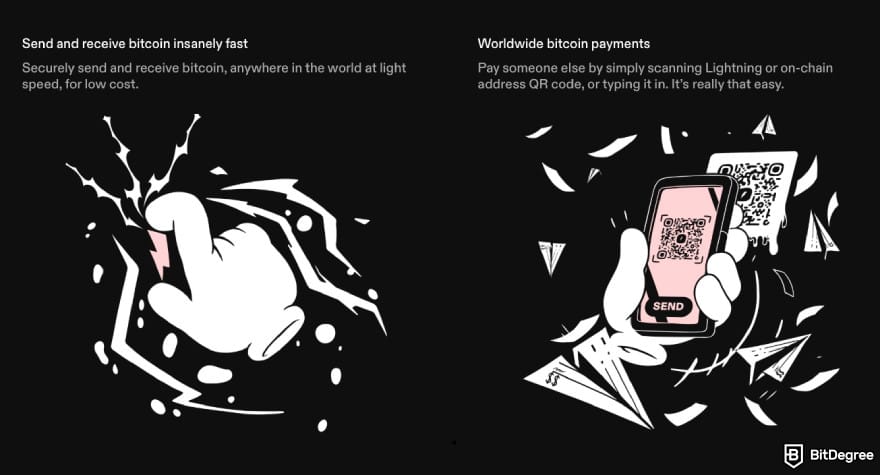
- Global money transfers. With “Send Globally”, users can pay or send funds internationally using BTC as the backbone.
- Fee-conscious users. Lower network fees via Lightning are a plus for anyone looking to save on transaction costs.
Overall, Strike is not for the altcoin enthusiast or the day trader seeking dozens of markets. But if your goal is to buy, hold, and use Bitcoin efficiently - whether as an investment or as a payment tool - Strike checks all the right boxes.

Did you know?
All Crypto Exchanges may look similar to you but they're NOT all the same!
Advantages
Strike keeps things focused and practical. Below are the core advantages at a glance. We’ll dive deeper into each feature later in this Strike crypto review.
- Lightning Network payments
- Send Globally service
- Beginner-friendly
- Bitcoin-backed lending
- Strike Private
Now, as we already know, the Strike crypto app supports Lightning Network for near-instant, low-cost BTC transfers, plus an email-style Lightning Address assigned to every user for easy sending and receiving. This makes everyday payments simpler than sharing long invoices or QR codes. Paired with the Strike crypto wallet, these tools keep routine BTC transfers smooth and low-friction.
Send Globally uses the aforementioned Lightning rails under the hood to move money, while recipients get local currency on the other side, often within seconds. Neither party needs to hold BTC to use it, which lowers friction for cross-border payments.

When it comes to the interface, it’s clean and focused; everything is front and center. Fewer toggles and markets mean fewer chances to misclick, which is helpful for first-timers. You still get useful BTC-only tools, but the overall feel remains approachable for everyday use.
Qualified customers can borrow against their BTC instead of selling it. It’s a convenience feature for liquidity without triggering a taxable sale in many jurisdictions, though availability, limits, and terms vary by region and profile.
Lastly, Strike offers a private-tier experience oriented to larger or more active clients. Benefits can include higher limits, faster service, and dedicated support, useful if you move bigger amounts.
Limitations
Before we dive deeper into features, it’s fair to note where Strike may fall short. The platform’s focus and simplicity come with trade-offs that won’t suit every user. Here are the cons:
- Bitcoin-only
- Custodial wallet
- Funding rails constraints
- Limited trading tools
As we already know, the Strike crypto app doesn’t offer altcoin markets. Official materials emphasize Bitcoin and Lightning rather than multi-asset trading. If you want to diversify, you’ll need a better exchange.
Another crucial thing to know is that Strike holds private keys on your behalf. It’s convenient, but not self-custody. If you prefer full control, it’s suggested that you use a hardware wallet, such as Ledger Flex or Trezor Safe 5.

Then there are the funding rails constraints. USD deposits are via ACH/wire; SWIFT isn’t supported. Instant cash withdrawals cost extra. USDT deposits/withdrawals (TRON) are available only in select countries, and fund your cash balance - they’re not altcoin trading.
The last thing to note is the limited trading tools. The app supports buys, recurring buys, target orders, and payments, not derivatives, margin, or advanced charting. It’s a payments-first BTC app, not a pro trading exchange.
📚 Read More: Best Hardware Wallets
Security
A lot of people also seem to be raising the question, “Is Strike crypto legit?”, so let’s explore this question.
The exchange uses a custodial wallet model. That means Strike holds your Bitcoin for you, while you control your account. This is convenient for beginners, payments, and quick transfers, but it also means you rely on Strike’s operational security and compliance controls.
For account security, Strike supports two-factor authentication and login protections like PIN or biometrics on the app. Turn on 2FA immediately, set strong passwords, and review withdrawal confirmations and device/session history. These basics reduce the most common account-takeover risks.
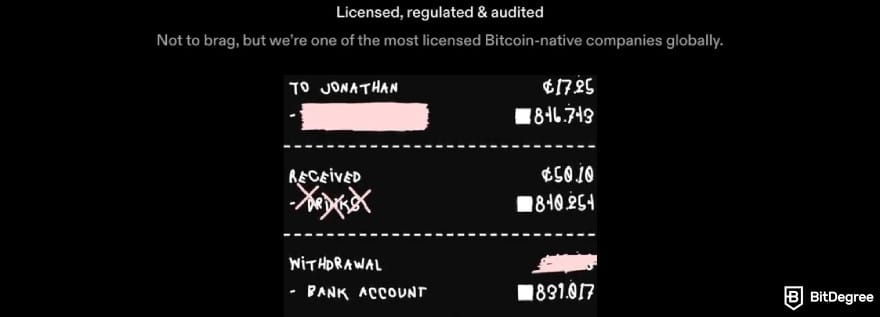
On the platform side, Strike states it uses encryption, access controls, monitoring, and standard cloud security practices. It also follows KYC/AML requirements and applies the Travel Rule in supported regions, which helps with fraud and sanctions compliance. The trade-off is reduced privacy versus non-custodial wallets, especially in the EU/UK under GDPR.
Travel Rule - a global AML standard requiring financial institutions and virtual asset service providers to collect and transmit sender and recipient identification with fund or crypto transfers, improving traceability and deterring illicit finance.
Remember: not your keys, not your coins. Custody concentrates risk in any centralized service. If you keep larger balances or hold long term, consider self-custody on a hardware wallet and use Strike mainly for payments or on/off-ramp needs.
One known gap across many custodians is proof-of-reserves transparency.[2] If there’s no public, real-time asset attestation, treat the exchange like any other fintech: enable 2FA, keep only what you need for near-term activity, and store the rest in cold storage you control, such as Ledger Stax.
Localization and Regional Adaptability
Strike targets global Bitcoin payments, not multi-asset trading. The app is available in over 95 countries, including the US (except for New York). Localization centers on a simple, English-first UX. In addition, Lightning Network support enables low-fee, near-instant cross-border payments.
Now, regional availability and features differ. In the US, cash funding relies on ACH or wire. SWIFT isn’t supported. Some countries can top up via USDT to a cash balance. Fees, limits, and Send Globally corridors vary by market - always check the app’s region settings before transacting.
Security and privacy expectations vary by jurisdiction. Custody simplifies onboarding and payments but reduces privacy versus self-custody. For long-term holdings, consider hardware wallets, and use Strike mainly as an on/off-ramp and for cross-border payments.
Trading Tools
Strike lets you buy and sell Bitcoin instantly in-app. You can place one-time purchases or sell whenever you need liquidity. Strike crypto fees are tiered by monthly volume. Buying, sending, and withdrawing live on the same Bitcoin screen for a simple flow.
Set recurring purchases to automate DCA hourly, daily, weekly, or monthly. After the first week or starting with the second purchase, Strike crypto fees for trading are waived on these scheduled buys.
Moreover, use target orders for increased convenience. Set a price, amount, and expiration - or keep it open until canceled. Strike reserves the needed cash or Bitcoin; orders execute only in full when the target is reached.
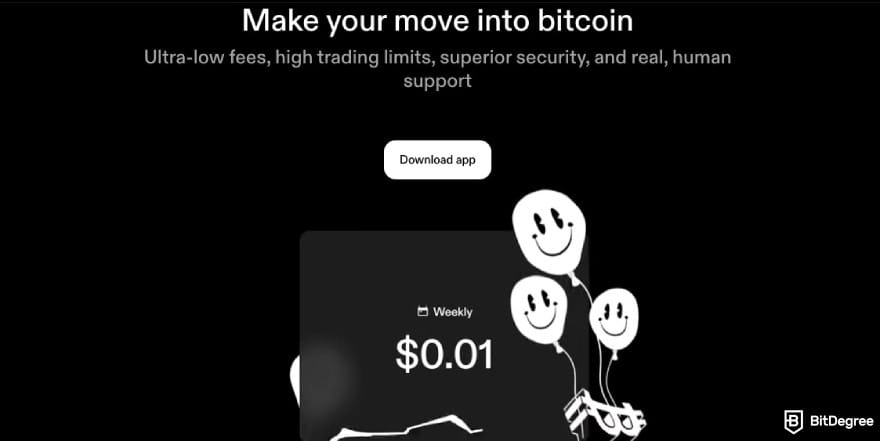
You can also get paid in Bitcoin, which lets you direct-deposit a paycheck and automatically convert a percentage to BTC. Choose the split between dollars and Bitcoin, and adjust anytime. These allocations are treated like Bitcoin purchases and follow Strike’s trading-fee tiers (the fees are covered in more detail right after this chapter).
Furthermore, you can enable Bitcoin auto-withdrawals to send your entire BTC balance to the present address whenever it reaches a threshold you choose. Withdraw via on-chain or lightning; on-chain auto-withdrawals are free according to Strike’s policy.
For very large trades, though, Strike Private provides OTC execution with custom pricing, deep liquidity, and concierge handling. It’s designed for roughly $100K - $100M+ orders and connects directly to your Strike account for funding and settlement.
📚 Read More: Best Crypto OTC Exchanges
Fees and Limits
Fees matter - a lot. Luckily, Strike keeps things simple. However, some limits and rails do vary by region and method. Now, here is a quick snapshot of Strike’s crypto fees.
Type | Fees | Limits |
|---|---|---|
Bitcoin buy/sell | Tiered 0.99% - 0.39% | Up to $2,500,000 per purchase |
Recurring buy (DCA) | $0 trading fee after the first week | N/A |
BTC withdrawal - on-chain | Flexible: free | Unlimited |
BTC/Lightning send | Estimated routing fee (in-app) | Unlimited |
Cash deposit - ACH | Fee waived | Unlimited, in select countries |
Cash deposit - Wire | No fees | Unlimited |
Cash withdrawal - ACH | Fees waived | Up to $100,000 per withdrawal |
Cash withdrawal - Wire | $15 flat fee | $50,000 - $5,000,000 per withdrawal |
Table: Overview of Strike's fees and limits
Bottom line: Strike rewards larger buys and favors Lightning and wires for moving money quickly, while ACH limits scale with verification. Always check the in-app quote before confirming, since fees and corridors can vary by region and rail. Next, let’s look at how support handles issues if something goes wrong mid-transfer.
Customer Support
Strike’s customer support is pretty basic, perhaps even slightly underwhelming, considering it’s a crypto exchange. The reason I mention this is that the platform lacks live customer support, available either by phone or chat.
Currently, the only options are in-app support messages and email support. Here is why I find it lacking:
- Crypto trades and liquidations happen 24/7. Slow, ticket-only support can result in missed exits, margin liquidations, or stuck withdrawals - direct financial loss for you.
- Security incidents require real-time action. If an account is compromised, users need an agent who can immediately lock the account, pause withdrawals (if still pending), and verify identity. Email queues are too slow, and on-chain transfers are irreversible.
- New users often need hand-holding during onboarding, funding, or their first buy. Live help increases completion rates and reduces abandonment at critical steps.
- Real-time agents can validate official channels, guide users through secure recovery steps, and reduce damage from spoofed emails or fake sites.
I could probably name a few other reasons why not having a live customer support is bad for a crypto exchange, but I’ll withhold.
That being said, there is a but. The Strike crypto exchange offers phone support, albeit with some user requirements.

This method of customer support is being progressively rolled out to select eligible users in the United States. However, even if you are a citizen in the US, you’ll still only be able to contact Strike’s support during available operating hours. In other words, it doesn’t work 24/7.
Lastly, the Strike crypto reviews that are on TrustPilot are also divided into two halves. At the moment of writing, the overall rating is 2.9, with a total of 110 reviews written.
User Experience
Strike’s BTC-only UI/UX is intentionally minimal: buy, send, and receive live on one screen. Payments run on the Lightning Network for near-instant, low-cost transfers, and every account gets a Lightning Address for simple, email-like receiving and QR sharing.
Onboarding is fast and guided. You start with email, then add basic details; identity verification unlocks certain features and higher transaction limits, which also depend on your country and verification level.
Every day, flows are practical: Send Globally converts your cash to the recipient’s local currency over Lightning. You can set a default receiving currency (cash or BTC). For DCA, recurring purchases waive fees after the first week, and target orders execute only at your chosen price.
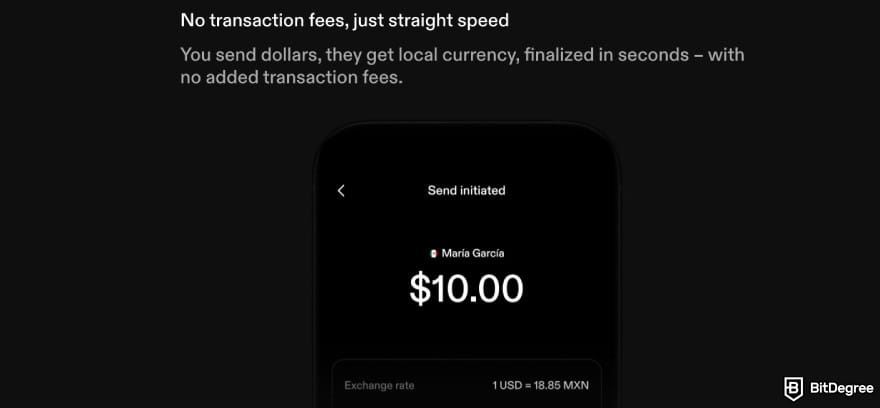
The mobile app experience is polished and beginner-friendly. Strike offers iOS and Android apps, plus home/lock-screen price widgets for quick, glanceable info.
Customer support is also a big part of the user experience. That said, we already reviewed this part of the exchange, so there’s no point in repeating the information; just remember that there is no 24/7 live customer support.
Lastly, I should mention that while I was creating an account with Strike, I was surprised by the slow verification process. It takes around 1-2 days to pass KYC, which is definitely slow compared to some top-notch exchanges like Binance, Kraken, and Bybit.
How to Use Strike
The last part of this Strike crypto review is learning how to use it at a basic level. Therefore, let’s start by creating an account.
How to Create a Strike Account
Since the exchange is only available through your phone, first you’ll need to download the app on either Android or iOS. After that, follow these instructions:
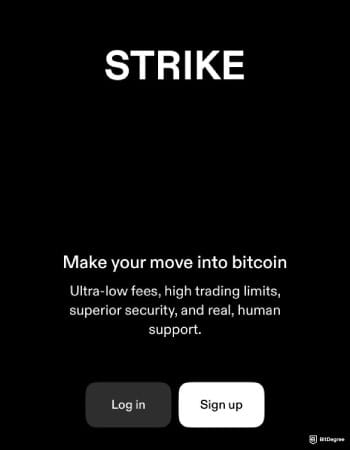
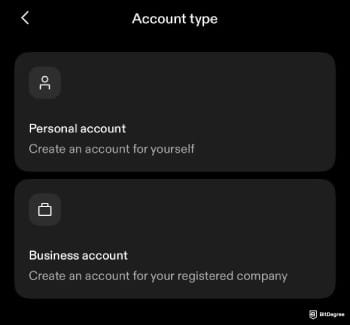

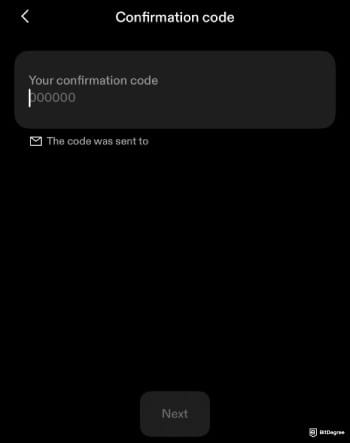
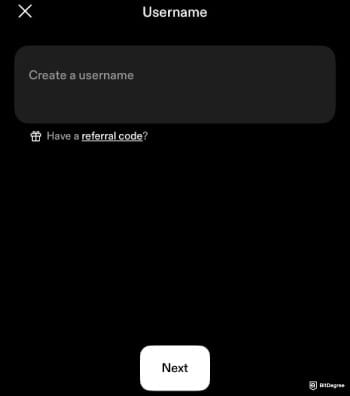
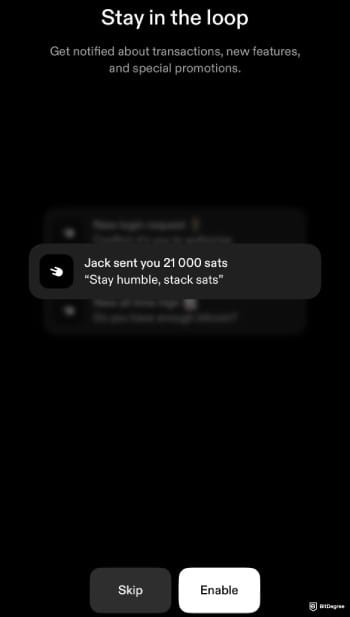
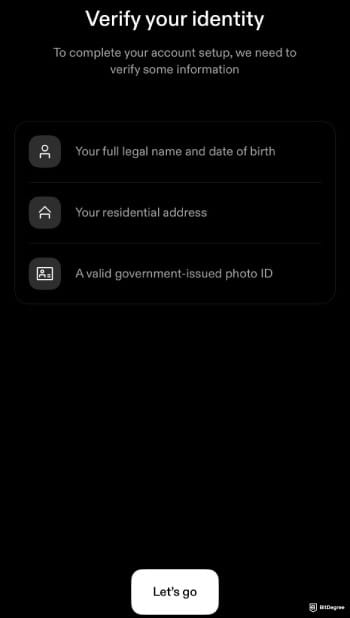
That’s it. After you’ve completed all of the steps, you should see a screen stating that the verification is in progress, and they’ll contact you within 1-2 business days with the next steps.
How to Deposit on Strike
Depositing your funds on Strike is easy and intuitive. Here is how you do it step-by-step:
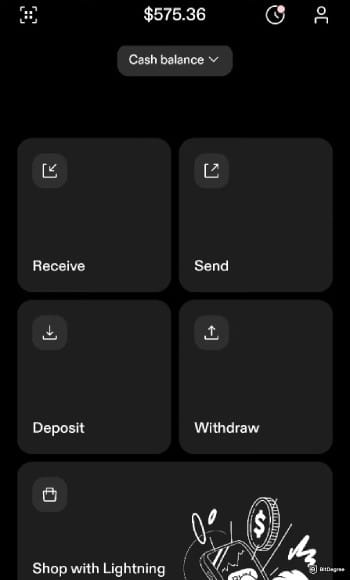
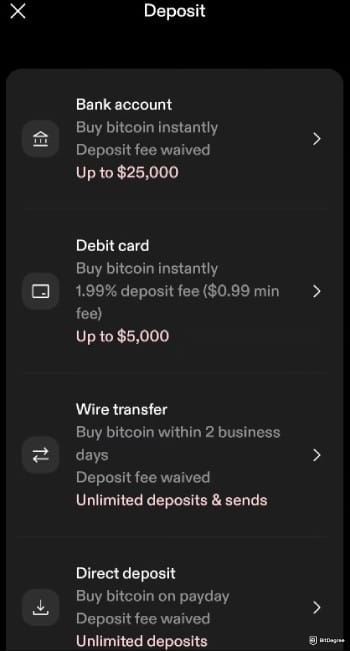
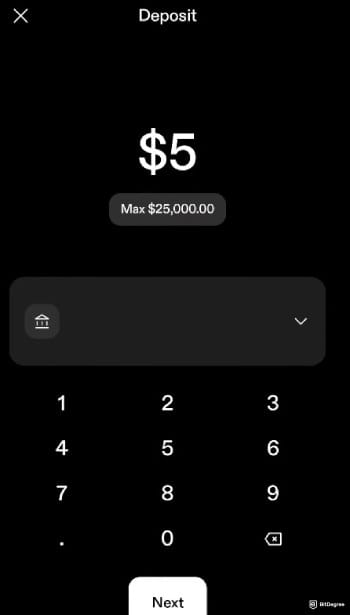
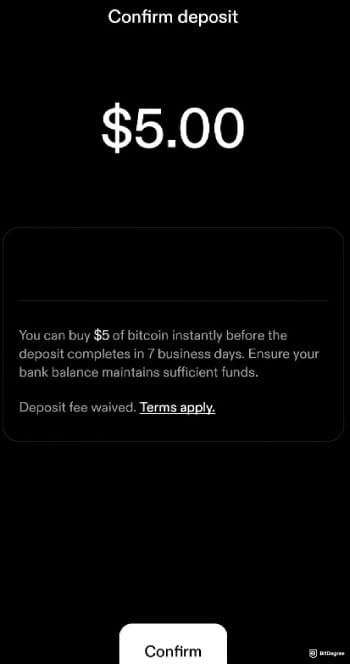
As I said, the deposit flow is quite easy to get a hang on.
How to Withdraw on Strike
Withdrawing on Strike is quite similar to depositing, but here is a quick guide either way:
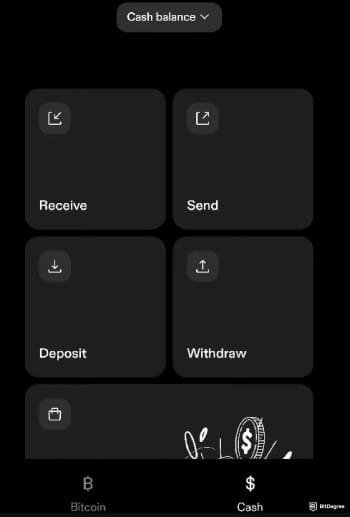
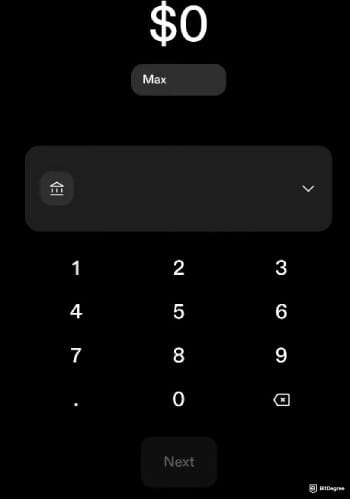
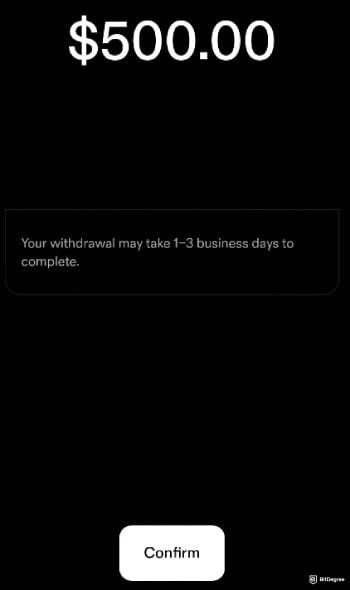
That's it. Withdrawing on Strike is also quite easy, as everything is made to be intuitive and beginner-friendly.
Comparison to Other Popular Exchanges
While writing this Strike crypto review, I felt like the exchange doesn’t really perform as well as some other platforms do. So, to put it into perspective, I decided to compare Strike to some widely-known competitors.
Strike VS Binance

Strike keeps it Bitcoin-only: buy, send, and spend BTC with a clean, simple app. Binance, however, is a full exchange with 350+ cryptocurrencies and many trading modes. If you want altcoins and breadth, Binance fits; if you want a focused BTC flow, Strike is simpler.
Fees differ. Strike uses tiered trade fees from 0.99% down to 0.39%, and recurring buys waive the fee after the first week/second purchase. Binance spot rates start at 0.10% for makers and takers, with extra discounts when paying fees in BNB.
Now, I would say that payments are where Strike shines, but that’s not really the case since Binance also supports the Lightning Network, mainly for BTC deposits and withdrawals. Though, Strike does have the “Send Globally” feature that allows for cash-to-cash payouts.
Availability isn’t identical. Strike works in 95+ countries, while Binance supports over 150. If you were to look at it from a sheer number perspective, that doesn’t sound like a big difference, but when you think about it practically, it definitely makes a difference.
Bottom line: pick Strike for simple Bitcoin buying and Lightning-powered payments. Pick Binance for a big coin list and deeper trading features under one roof. Different tools, different jobs.
📚 Read More: Binance Review
Strike VS Kraken
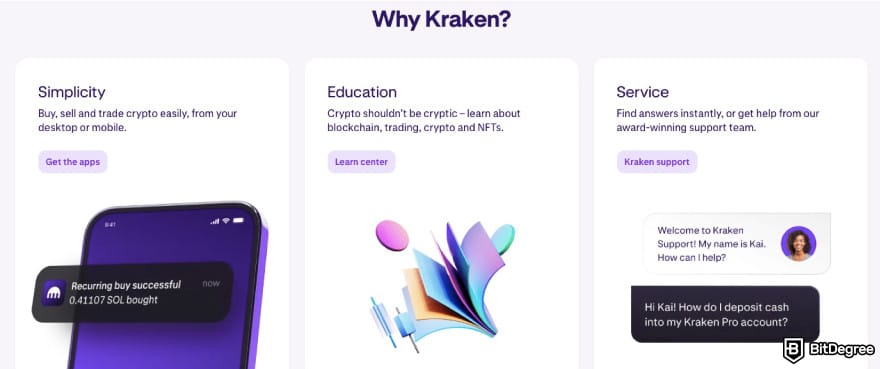
Strike stays Bitcoin-first. Kraken, on the other hand, is a full-fledged exchange with 350+ assets, margin and futures, plus 24/7 live chat. If you want a wide range of selection and pro tools, Kraken is a better choice by a landslide. Though, if the only crypto you’re interested in is BTC, Strike is easier to use.
When it comes to fees, Strike uses tiered trading fees from 0.99% down to 0.39%, and recurring buys waive trading fees after the first week/second purchase. Kraken Pro starts at 0.25% maker / 0.40% taker and drops with volume; Instant Buy is 1% plus spread.
Payments are where Strike might be a better option. You get a Lightning Address for easy receiving, and “Send Globally” for cash-to-cash transfers over Lightning rails. Kraken does support Lightning deposits/withdrawals, but its edge is trading depth rather than payments.
In addition, Strike works in 95+ countries, including the US (except for New York). Kraken supports way more. To be more specific, over 190 countries.
Overall, Strike is a great choice for simple BTC stacking and Lightning-powered payments. Choose Kraken for lots of coins, advanced tools, 24/7 live support, and lower fees.
📚 Read More: Kraken Review
Strike VS Bybit
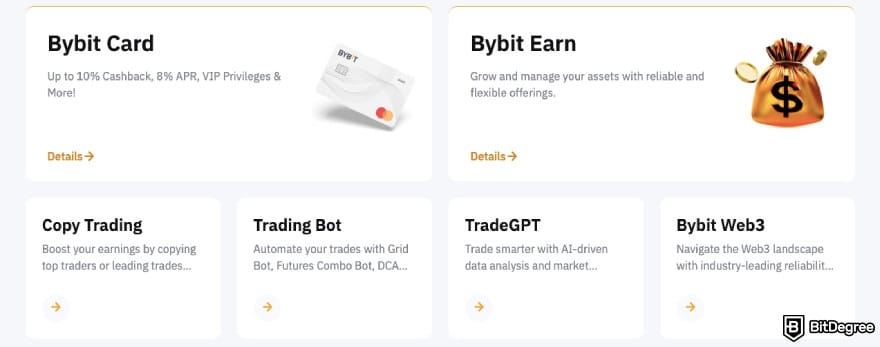
Strike keeps things lean for Bitcoin buyers and Lightning payments. Bybit is a trader’s playground - futures, copy trading, and built-in bots, among other features. It’s designed for active trading and automation more than day-to-day payments.
Naturally, the fees differ. Strike’s trading fee ranges from 0.99% - 0.39%, and DCA orders go fee-free after week one/second purchase. Bybit spot is 0.1% maker/taker for non-VIPs. Futures typically start near 0.02% maker and 0.055% taker, with VIP discount. However, keep in mind that the rates might change, so it’s always worth checking the official websites for more up-to-date information.
Moving on, Strike supports over 95 countries and all US states except one - New York. Bybit restricts multiple regions, including the US, UK, Canada, Singapore, Hong Kong, and France, so check eligibility first.
Bybit is still available in more countries, specifically in over 160 of them.
For payments, Strike has the edge: every user gets a Lightning Address, and “Send Globally” moves cash using Lightning rails. Bybit focuses on markets, leverage, and automation, not Lightning payments.
That said, if you’re only looking for quick BTC payments and simple stacking, pick Strike. However, if you need advanced trading tools, leverage, options, and copy trading, Bybit is a much better choice.
📚 Read More: Bybit Review

- Secure and reliable
- Accepts fiat currencies
- Lots of trading options
- Reputable exchange
- Accepts fiat currencies
- Offers various trading options

- Huge trading variety
- Regulation-compliant around the globe
- Fair trading fees
- Beginner-friendly
- A wide array of features
- Vast number of different crypto coins & tokens

- Beginner-friendly
- Secure
- Decent trading and withdrawal fees
- Crypto.com Visa Card
- Automated tools & bots
- Ecosystem synergy with CRO
Conclusions
Strike is definitely a good exchange if your portfolio only consists of Bitcoin and you don’t trade. The platform is also great for payment, seeing that it supports the Lightning Network. Essentially, this feature is a way to transact BTC faster, cheaper, and more privately than on the Bitcoin blockchain.
That said, as mentioned in this Strike crypto review, the platform does have its own shortcomings, one such being the customer support. Unfortunately, there is no easily accessible 24/7 customer support. At the time of writing, only US citizens have the choice to get assistance through a phone call. Everyone else needs to write a message to the support and hope for a quick resolution.
The content published on this website is not aimed to give any kind of financial, investment, trading, or any other form of advice. BitDegree.org does not endorse or suggest you to buy, sell or hold any kind of cryptocurrency. Before making financial investment decisions, do consult your financial advisor.
Scientific References
1. Divakaruni A., Zimmerman P.: 'The Lightning Network: Turning Bitcoin into money';
2. Braband S.: 'The role of Proof of Reserves in enhancing trust and transparency in Digital Currency and Digital Asset Systems'.


